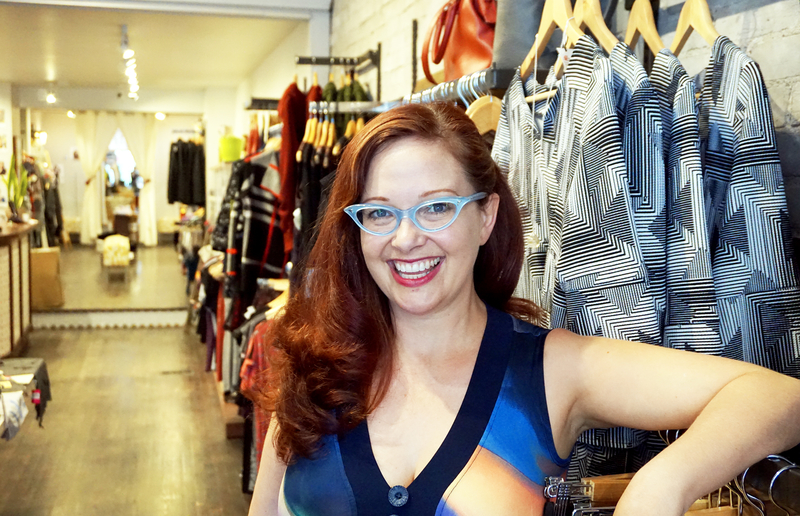
Fresh Collective keeps their community looking good with the help of digital tools
Case Study: How Fresh Collective uses Digital Tools to increase in-store sales
Laura-Jean Bernhardson was clearing out her basement a few months ago and came across stacks of binders filled with training materials, request slips for points of sales, and employee contact lists; pile after pile, 30 or 40 binders in all, each collecting dust. It was a throwback to the early days of Laura-Jean’ s women’ s fashion boutique and Queen St. mainstay Fresh Collective, which the designer started in 2003 as a way to showcase multiple designers in one space.
“Everything was paper then,” she says. “It was totally manual, we were writing all our sales, we were tallyingup manually at the end of the day –and bit-by-bit we started putting in little things to make it easier.”
First, she added excel spreadsheets to track. Then an online store, which although Laura-Jean admits she got into from the early days given she was designing her own clothes and already had an understanding of what running a website entailed, she still continues to redesign the website as she folds new technology into her business model.
In fact, the digital architecture has become a fundamental part of her business, which includes two more Fresh Collectives, one in Kensington Market and one in the Roncesvalles neighbourhood.
Laura-Jean has adopted Google Docs to share employee-training manuals in the cloud as well as utilizing other-online hosted services like accounting platform QuickBooks. She uses a platform called BigCommerce for her online store, which tells her when people have been browsing an item, and whether she should mark it down. AmberPOS, the inventory and point of sale system that Fresh Collective uses, seamlessly integrates sales with inventory management so that she doesn’ t have discrepancies between what’ s available online and across her three stores.
“Over the past three years I’ ve really noticed a shift in how people browse – it used to be they’ d come in the store and see what you have,” she says. “Now they browse online – they check out your social media, they check out your newsletter –we’ re able to reach them in their home or office, wherever they are, 24 hours a day.”
That doesn’ t necessarily mean the sales are happening online, says Laura-Jean pointing out that the website really only accounts for three to four per cent. But it’ s where the customers are finding their products. Which is why social media has become a major driving force for sales.
“Social media is huge – I’ m shocked by people who don't see the opportunity there,” she says. (But) I get it…it’ s that resistance to ‘ another new thing I have to learn.’
”The fashion entrepreneur is self-taught, watching online tutorials to fine-tune her skillset and building social media specific campaigns. A recent one saw Fresh Collective partnering with a nearby wellness centre and featuring employees from the clinic in the fashion boutique’ s adverts.
“We invite women from the community to come in and be photographed in our clothes and they share it and we share it,” she says.
As for advice to other businesses, she recommends visiting Digital Main Street online for a technology audit.
“You fill out the profile and you can see what area you’ re lacking the most in (like) maybe you’ re really strong in social media but not so much in other areas,” she says adding that the report shows you where to look for solutions. In the end, it’ s an evolution; you don’ t just buy-in to a bunch of solutions all at once, you pick a couple of your weaker areas and chip away at them.
“If you get three things done in a year, that’ s a good year,” she says. “Just keep picking away at it over time and before you know it you’ re looking at your empty binders going ‘ hey, we don't use paper anymore’…we're so much more organized.”
